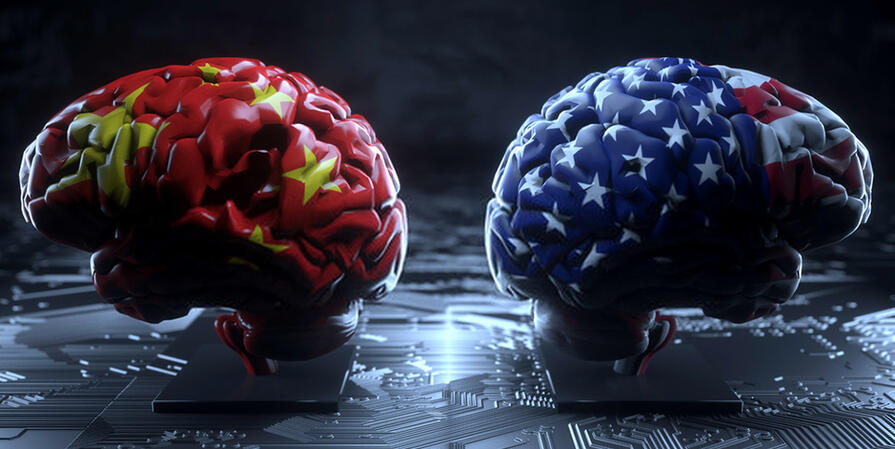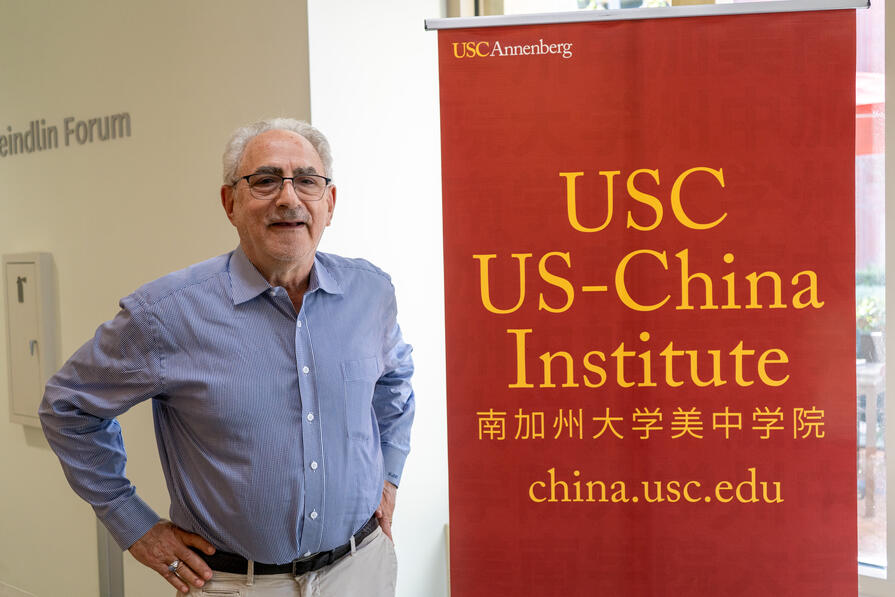From 1949 to 1979, direct U.S.-China science and technology exchanges were few and cooperation non-existent. By 1978, however, China’s paramount leader, Deng Xiaoping was focused on strengthening China’s science and technology. This priority drove early agreements between the U.S. and China on educational exchanges and science and technology cooperation. Deng visited places such as the Johnson Space Center and Boeing. Since then well over a million Chinese students and scholars have been trained or conducted research in the U.S. and many collaborative research projects have been facilitated. Both China and the United States have benefited. That initial agreement on science and technology cooperation has been routinely renewed for four decades. The most recent renewal expires at the end of August and it’s not at all certain the agreement will be extended.

Deng Xiaoping and Jimmy Carter agree to cooperation on science and technology, 1979. White House Photo.
The cooperation agreement survived the violent suppression of 1989 demonstrations in Beijing and elsewhere and the imposition of sanctions by Washington. It survived the fall of the Soviet Union that drove the original rapprochement. It was modified to add commitments on intellectual property rights. China’s economic rise, its rapid expansion of its military capabilities, complaints about economic espionage, limited market access, industrial subsidies, lack of transparency on covid-19 and systematic violations of human rights have soured many in the U.S. on continuing to encourage cooperation. American critics doubt that both sides benefit equally from cooperation. Supporters highlight the important work American and Chinese scientists, engineers and others do together. They point to work in medicine and other fields that serves humanity. They argue that problems without borders, including disease prevention and treatment as well as mitigating and adapting to climate change, absolutely require greater scientific and technological communication and collaboration.
Funding and other specifics of science and technology cooperation are not included in the agreement. Instead, the agreement sanctions cooperation and provides a broad framework for it. Building on the agreement, the two countries have funded cooperative work on green energy and other topics. Far more cooperation, though, has happened through research institutions and individuals as well as companies and non-profit organizations. State funding from both sides has underwritten important parts of this work which has advanced our understanding. Having the two national governments agree that cooperation is, in principle, desirable, has been a solid foundation to build upon.

One of the U.S.-China research collaborations, the US-China Clean Energy Research Center, focusing on addressing urban heat islands through "cool" roofs.
The agreement has been modified in the past and modifications could be negotiated now. Those might include provisions for shared security or ethical review. The geopolitical environment is different. Both countries already restrict participation in some state-funded research areas. Cooperative research involving U.S. scientists is already subject to institutional standards and review. But electing to not renew or at least talk about renewing the cooperation agreement signals a changed assumption about the other, that the U.S. doubts any cooperation could be mutually beneficial. It is difficult to anticipate how collaborative research and scientific exchange, particularly research funded by either or both governments, may be affected.
It is useful to recall that scientists from the U.S. and the Soviet Union sometimes cooperated, most famously in engineering a joint space mission. And that the U.S. cut back or stopped some projects to signal opposition to Soviet actions. Besides China, the U.S. has science and technology cooperation agreements with many countries, including some which have been accused of economic espionage against the U.S. or the theft of American intellectual property. Last September, the White House issued a report which noted China’s expansion of international science cooperation and stressed the many ways science and technology cooperation benefit the nation and world. It points to the need to ensure data and facility access and other concerns. It concludes, “To maintain U.S. S&T leadership in an increasingly competitive S&T environment, the United States needs to ambitiously advance international research or risk losing influence.”
In 2017, the Trump administration's National Security Strategy credited "access to the U.S. innovation economy" with helping China's economic and military development. Yesterday, Pres. Joe Biden issued an executive order to restrict U.S. investment in “countries of concern.” China wasn’t singled out,but was clearly the target of the order. China’s Ministry of Foreign Affairs described the action as “economic coercion and tech bullying.” China, of course, has ample capital of its own and has channeled resources towards the priorities (e.g., electric vehicles, aerospace, robotics, biopharma, green energy) in the government’s Made in China 2025 wish list. The U.S. restrictions – which have not been detailed -- are more aimed at keeping China from benefiting, in some sectors, from the managerial expertise, market knowledge and networks that investors may bring. The administration has consulted with the private sector in deciding to issue this order and government departments are now inviting comment as the specific rules are developed.
*****
In addition to the links provided above, the USCI website offers the text of intellectual property additions to the agreement as well as discussions of innovation policy, the experience of venture capitalists and issues for Chinese researchers in America. There are also U.S. government produced (2006, 2011) or commissioned (2014) reports on the impact of the science and technology agreement. There are many examples of vital U.S.-China research collaborations at USC, touching on aging and CO2 capture to spatial sciences and urban design. These include projects undertaken with partners from the Association for Pacific Rim Universities (e.g., global public health).
Photo illustration above by
Taiwan and Public Diplomacy

In March 2022, people took to the streets to demonstrate in support for Ukraine and mobilized supplies to send.
How Taiwan uses public diplomacy to strengthen its relationship with the United States is the focus of a new article by Thomas Hollihan and Patricia Riley, two USC professors of communication, out now in the summer issue of the Journal of Public Diplomacy. The article examines key debates in the field of public diplomacy, utilizing the case of Taiwan. Hollihan and Riley track Taiwanese public diplomacy in the context of the covid-19 pandemic, global reliance on Taiwan’s semiconductor industry and the Russian invasion of Ukraine, observing, “Taiwan showcased the benefits of transparency and playing by the rules of the international order, and it made itself indispensable to that order.”
Click here to subscribe to the USCI newsletter. It includes information about upcoming events, professional development opportunities, and quick looks at important issues in U.S.-China relations and trends in contemporary China. Previous issues are available here.



